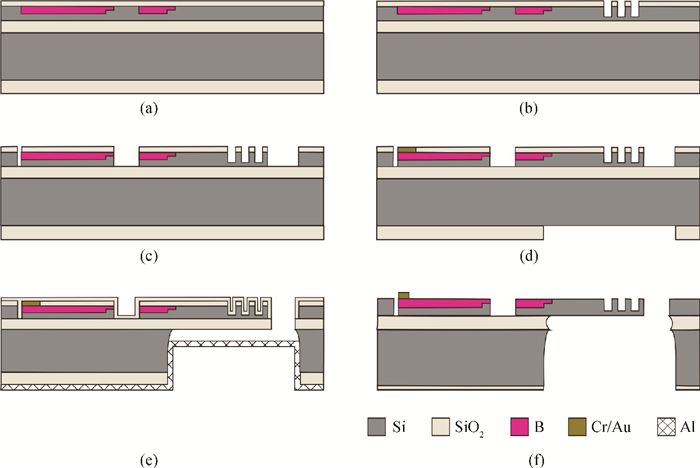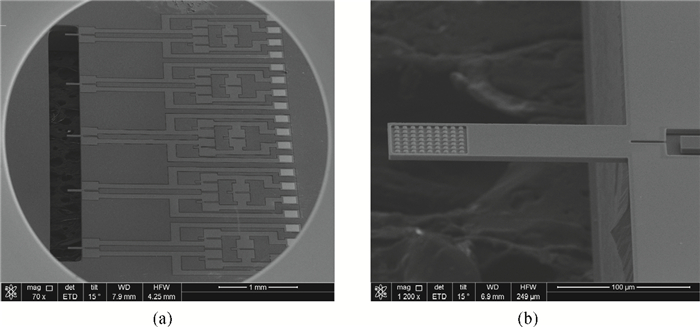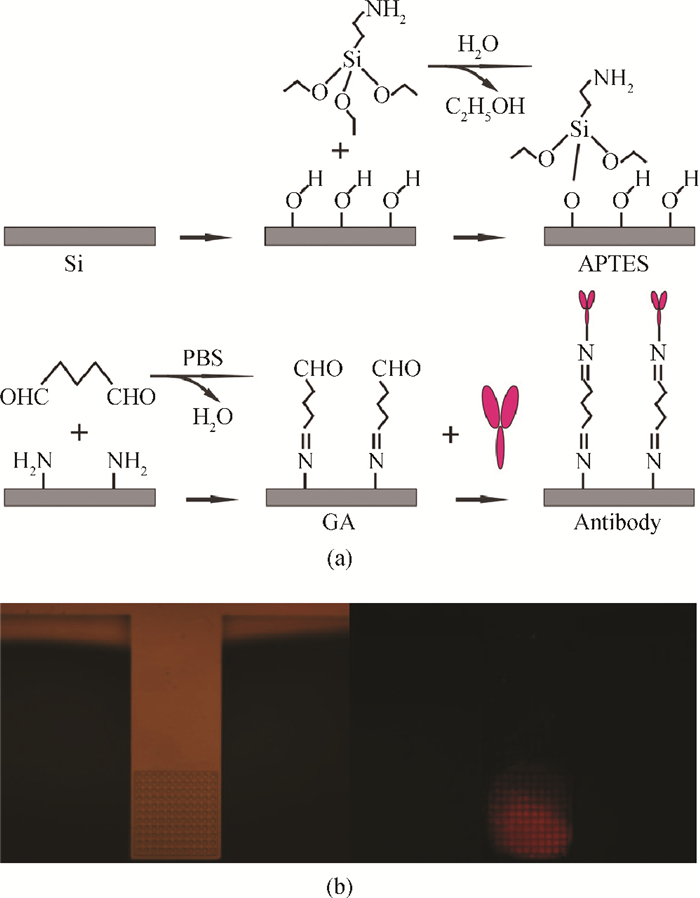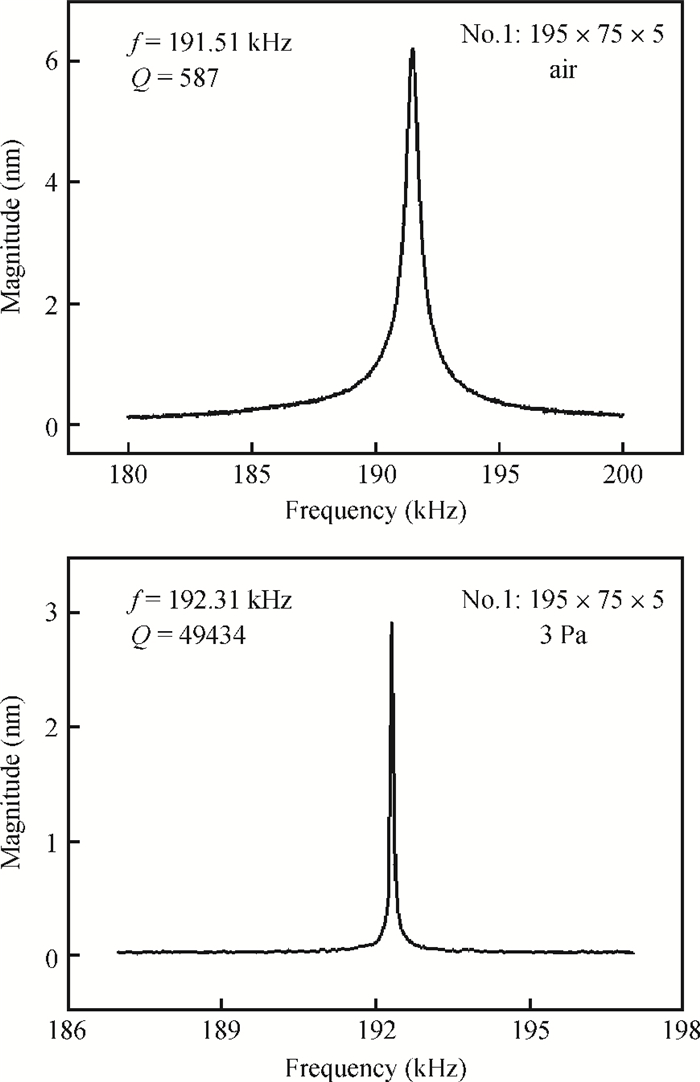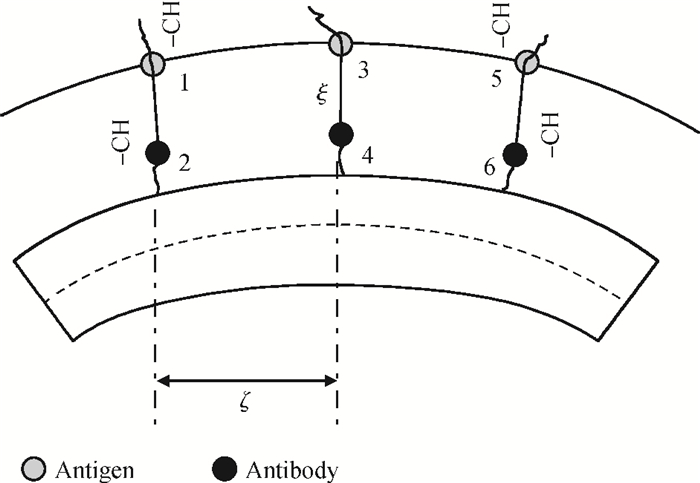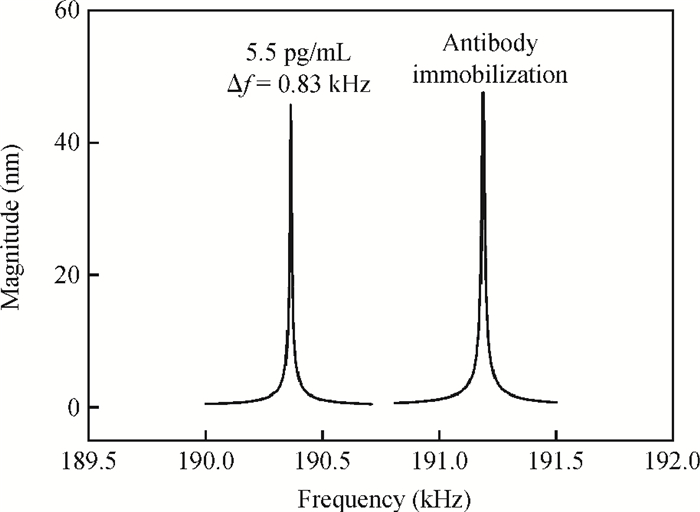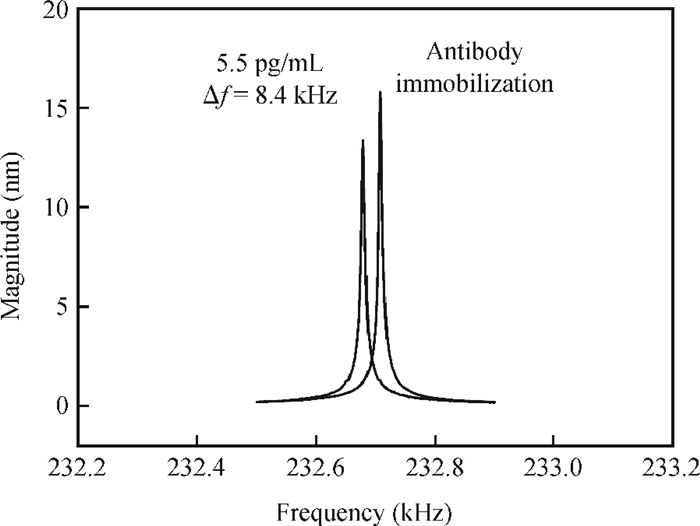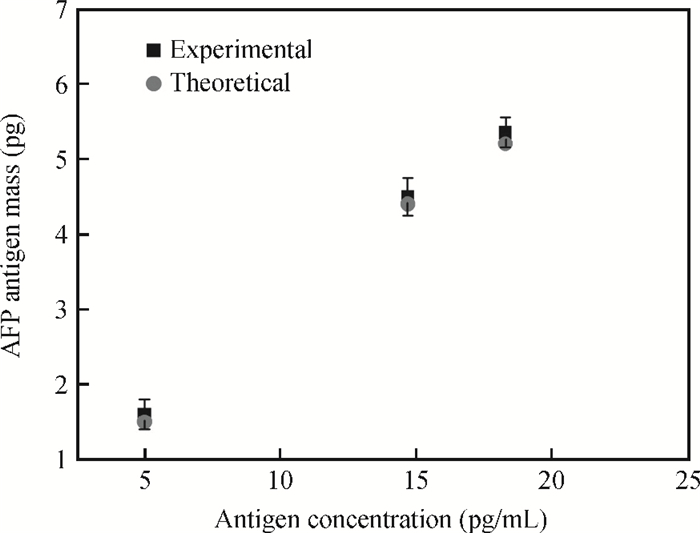| Citation: |
Shuaipeng Wang, Jingjing Wang, Yinfang Zhu, Jinling Yang, Fuhua Yang. Cantilever with immobilized antibody for liver cancer biomarker detection[J]. Journal of Semiconductors, 2014, 35(10): 104008. doi: 10.1088/1674-4926/35/10/104008
****
S P Wang, J J Wang, Y F Zhu, J L Yang, F H Yang. Cantilever with immobilized antibody for liver cancer biomarker detection[J]. J. Semicond., 2014, 35(10): 104008. doi: 10.1088/1674-4926/35/10/104008.
|
Cantilever with immobilized antibody for liver cancer biomarker detection
DOI: 10.1088/1674-4926/35/10/104008
More Information
-
Abstract
A novel cantilever array-based bio-sensor was batch-fabricated with IC compatible MEMS technology for precise liver cancer bio-marker detection. A micro-cavity was designed in the free end of the cantilever for local antibody-immobilization, thus the adsorption of the cancer biomarker takes place only in the local region of the cantilever instead of the whole lever, and the effect of adsorption-induced $k$ variation can be dramatically reduced. These structural features offer several advantages:high sensitivity, high throughput, high mass detection accuracy, and a portable system. In addition, an analytical model has been established to eliminate the effect of the adsorption-induced lever stiffness change and has been applied to the precise mass detection of the cancer biomarker AFP; the experimentally detected AFP antigen mass by the sensor (7.6 pg/mL) is quite close to the calculated one (5.5 pg/mL), two orders of magnitude better than those of the fully antibody-immobilized cantilever sensor. These approaches can promote real applications of the cantilever sensors in cancer diagnosis. -
References
[1] Arlett J L, Myers E B, Roukes M L, et al. Comperative advantages of mechanical biosensors. Nature Nanotechnology, 2011, 6:203 doi: 10.1038/nnano.2011.44[2] Raiteri R, Grattarola M, Butt H J, et al. Micromechanical cantilever-based biosensors. Sensors and Actuators B, 2001, 79:115 doi: 10.1016/S0925-4005(01)00856-5[3] Alvarez M, Lechuga L M. Microcantilever-based platforms as biosensing tools. Analyst, 2010, 135:827 doi: 10.1039/b908503n[4] Hierlemann A, Brand O, Hagleiter C, et al. Microfabrication techniques for chemical/biosensors. Proc IEEE, 2003: 839[5] Lavrik N V, Sepaniak M J, Datskos P G, et al. Cantilever transducers as a platform for chemical and biological sensors. Review of Scientific Instruments, 2004, 75:2229 doi: 10.1063/1.1763252[6] Johnson B N, Mutharasan R. Biosensing using dynamic-mode cantilever sensors:a review. Biosensors and Bioelectronics, 2012, 32:1 doi: 10.1016/j.bios.2011.10.054[7] Lee J H, Kim T S, Yoon K H. Effect of mass and stress on resonant frequency shift of functionalized Pb(Zr0.52Ti0.48)O3 thin film microcantilever for the detection of C-reactive protein. Appl Phys Lett, 2004, 18:3187 https://www.google.co.il/patents/US20110172565[8] Hwang K S, Eom K, Lee J H, et al. Dominant surface stress driven by biomolecular interactions in the dynamical response of nanomechanical microcantilevers. Appl Phys Lett, 2006, 89:173905 doi: 10.1063/1.2372700[9] Hwang K S, Lee S M, Kim S K, et al. Micro-and nanocantilever devices and systems for biomolecule detection. Annu Rev Anal Chem, 2009, 2:77 doi: 10.1146/annurev-anchem-060908-155232[10] Albrecht T R, Grutter P, Horne D, et al. Frequency modulation detection using high-Q cantilevers for enhanced force microscope sensitivity. J Appl Phys, 1991, 69:668 doi: 10.1063/1.347347[11] Thundat T, Warmack R, Chen G, et al. Thermal and ambient-induced deflections of scanning force microscope cantilevers. Appl Phys Lett, 1994, 64:2894 doi: 10.1063/1.111407[12] Sony P, Puschnig P, Nabok D, et al. Importance of van der Waals interaction for organic molecule-metal junctions:adsorption of thiophene on Cu(110) as a prototype. Phys Rev Let, 2007, 99:176401 doi: 10.1103/PhysRevLett.99.176401[13] Yi X, Duan H L. Surface stress induced by interactions of adsorbates and its effect on deformation and frequency of microcantilever sensors. Journal of the Mechanics and Physics of Solids, 2009, 57:1254 doi: 10.1016/j.jmps.2009.04.010[14] Chen G Y, Thundat T, Wachter E A, et al. Adsorption-induced surface stress and its effects on resonance frequency of microcantilevers. J Appl Phys, 1995, 77:3618 doi: 10.1063/1.359562[15] Wormer P E S, van der Avoird A. Intermolecular potentials, internal motions, and spectra of van der Waals and hydrogen-bonded complexes. Chem Rev, 2000, 100:4109 doi: 10.1021/cr990046e[16] Pace C N, Fu H L, Fryar K L, et al. Contribution of hydrophobic interactions to protein stability. J Mol Biol, 2011, 408:514 doi: 10.1016/j.jmb.2011.02.053 -
Proportional views





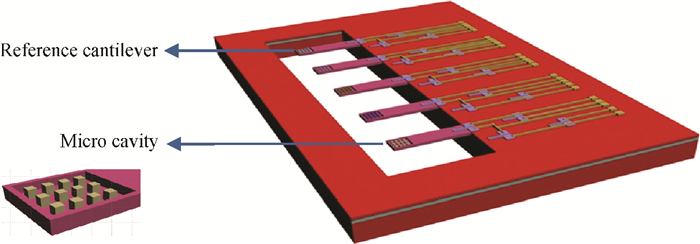
 DownLoad:
DownLoad:
